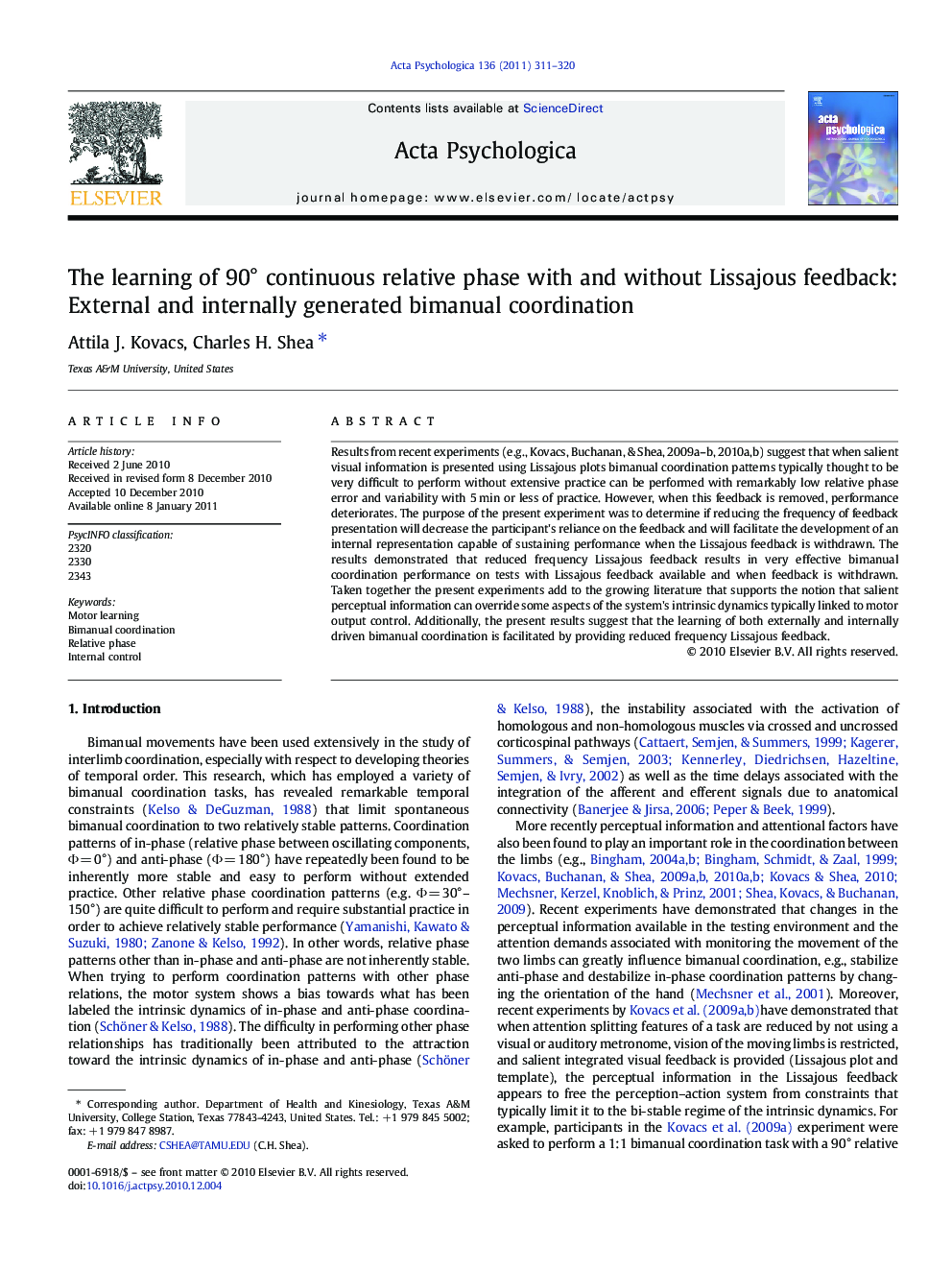| Article ID | Journal | Published Year | Pages | File Type |
|---|---|---|---|---|
| 920132 | Acta Psychologica | 2011 | 10 Pages |
Results from recent experiments (e.g., Kovacs, Buchanan, & Shea, 2009a–b, 2010a,b) suggest that when salient visual information is presented using Lissajous plots bimanual coordination patterns typically thought to be very difficult to perform without extensive practice can be performed with remarkably low relative phase error and variability with 5 min or less of practice. However, when this feedback is removed, performance deteriorates. The purpose of the present experiment was to determine if reducing the frequency of feedback presentation will decrease the participant's reliance on the feedback and will facilitate the development of an internal representation capable of sustaining performance when the Lissajous feedback is withdrawn. The results demonstrated that reduced frequency Lissajous feedback results in very effective bimanual coordination performance on tests with Lissajous feedback available and when feedback is withdrawn. Taken together the present experiments add to the growing literature that supports the notion that salient perceptual information can override some aspects of the system's intrinsic dynamics typically linked to motor output control. Additionally, the present results suggest that the learning of both externally and internally driven bimanual coordination is facilitated by providing reduced frequency Lissajous feedback.
